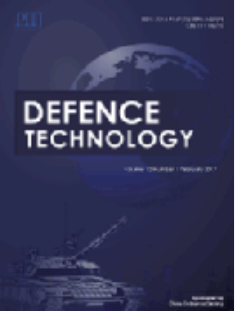Interface geometry modification to trap plasticized flash for improved joint strength of dissimilar rotary friction welds
IF 5
Q1 ENGINEERING, MULTIDISCIPLINARY
引用次数: 0
Abstract
Rotary friction welding is a highly effective solid-state technique for joining dissimilar materials, which offers the potential for significant weight reduction without compromising strength. Traditionally, during rotary friction welding, the severely deformed material, or flash, is expelled from the interface and machined away to achieve the desired joint geometry. However, this work introduces a novel approach: trapping the flash within the joint to improve joint properties. The study investigates two different interface geometry combinations—flat-flat and flat-taper interfaces. Previous research shows that Ni interlayer between steel and titanium can enhance the joint strength. This study builds on the existing knowledge (effect of Ni interlayer) by examining the influence of interface geometry to further improve the dissimilar joint performance. The experimental results, including tensile testing and microstructural characterization, highlight the superior performance of the flat-taper interface. The modified geometry minimizes flash loss, providing a cavity that retains both the flash and the Ni interlayer within the joint. This retention promotes dynamic recrystallization, resulting in refined grain structures near the interface. Moreover, the trapped Ni interlayer effectively prevents the formation of brittle Fe-Ti intermetallic compounds at the dissimilar material interface. The findings reveal that the flat-taper interface improved joint strength by an impressive 105% compared to the flat-flat interface. This innovative geometry modification demonstrates the potential to enhance mechanical properties of dissimilar joints through better flash and interlayer management.
改进界面几何形状以捕获塑化闪光以提高不同类型旋转摩擦焊缝的接合强度
旋转摩擦焊是一种非常有效的固态焊接技术,用于连接不同的材料,它提供了在不影响强度的情况下显著减轻重量的潜力。传统上,在旋转摩擦焊接过程中,严重变形的材料或闪光从界面中排出,并通过机械加工去除,以达到所需的接头几何形状。然而,这项工作引入了一种新的方法:在关节内捕获闪光以改善关节性能。研究了两种不同的界面几何组合——平-平和平-锥界面。以往的研究表明,在钢与钛之间添加Ni夹层可以提高接头强度。本研究建立在现有知识(Ni夹层效应)的基础上,通过研究界面几何形状的影响,进一步改善不同接头的性能。实验结果包括拉伸测试和微观组织表征,突出了平锥度界面的优越性能。改进后的几何形状最大限度地减少了闪光损失,提供了一个空腔,同时保留了接头内的闪光和Ni中间层。这种保留促进了动态再结晶,在界面附近形成了细化的晶粒结构。此外,捕获的Ni层有效地阻止了不同材料界面处脆性Fe-Ti金属间化合物的形成。研究结果表明,与平直界面相比,平直锥度界面可使接头强度提高105%。这种创新的几何形状修改表明,通过更好的闪光和层间管理,可以提高不同接头的机械性能。
本文章由计算机程序翻译,如有差异,请以英文原文为准。
求助全文
约1分钟内获得全文
求助全文
来源期刊

Defence Technology(防务技术)
Mechanical Engineering, Control and Systems Engineering, Industrial and Manufacturing Engineering
CiteScore
8.70
自引率
0.00%
发文量
728
审稿时长
25 days
期刊介绍:
Defence Technology, a peer reviewed journal, is published monthly and aims to become the best international academic exchange platform for the research related to defence technology. It publishes original research papers having direct bearing on defence, with a balanced coverage on analytical, experimental, numerical simulation and applied investigations. It covers various disciplines of science, technology and engineering.
 求助内容:
求助内容: 应助结果提醒方式:
应助结果提醒方式:


